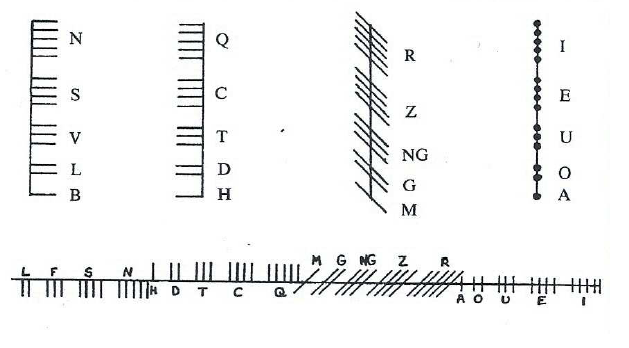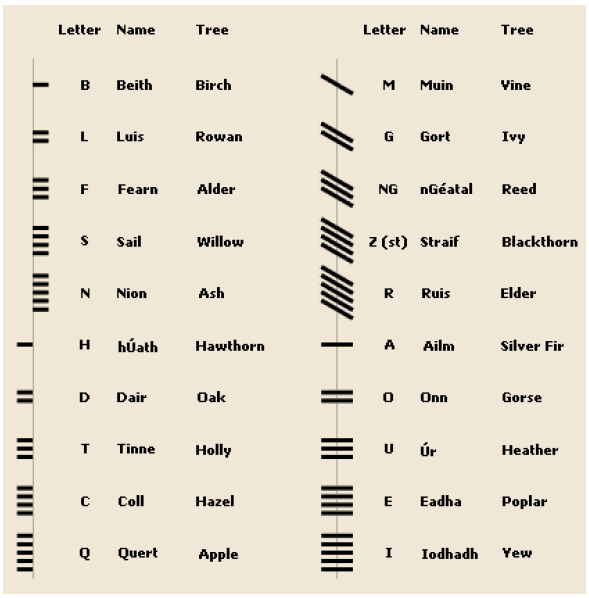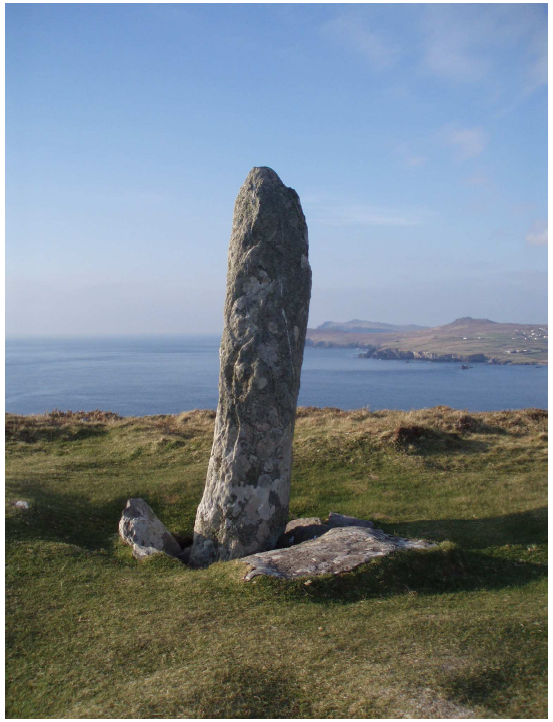Appendix 2: The Ogam Alphabet
From the 4th c. AD, Irish and Welsh people invented and used an elaborate alphabet, called Ogam (in modern Irish, Ogham), which was the earliest form of writing. It was composed of twenty characters, classified in four groups of five characters, which could be written vertically as well as horizontally (fig. 1).2489 Approximately 400 Ogamic inscriptions engraved on stone have been discovered in Ireland, Devon, South Wales, Cornwall and the Isle of Man - and possibly Scotland, but these specimens are contested. Most Ogam inscriptions are situated in Ireland (350), mainly in the South-West, notably in Co. Kerry (fig. 2 and 4).
Some of the Ogamic inscriptions from Devon, South Wales and the Isle of Man are ‘bi-graphic’, which means that they are in Ogamic and Latin letters. This allowed the specialists to date the Ogam epigraphically from the 4th or 5th c. AD down to the end of the 8th c. AD.

![Fig. 2: Analytical map of the repartition of Ogamic inscriptions in Ireland. [Black circles: single stone; crosses: group of 2-5 stones; white circles: group of 5 stones or more.] Melmoth, 1996-1997, p. 18.](/documents/getpart.php?id=1266&file=10000000000001EE0000023C45E05936.png)
Ogams were generally funerary inscriptions, and thus bore the name of a deceased person. Their use was however certainly not limited to a commemorative function, for Irish literature and folklore point to their powerful magical significance, particularly when carved on wooden sticks. In the Táin B ό Cúailnge [‘The Cattle Raid of Cooley’], the Ulster hero Cú Chulainn (‘The Hound of Culann’) had recourse to Ogam to cast spells on his enemies.2490 Twice, he inscribed magical messages in Ogam script on oak sticks, which he turned into rings and put at the top of a pole in the centre of the ford where his enemies would pass. To decipher the message - which was an injunction to go further -, the enemies had to consult the druids, which proves the magical character surrounding this code writing.
Ogam is a cryptographic alphabet or code writing the meaning of which is to be deciphered. This means that each alphabetical sign is to be understood to mean ‘synonym of’. The key to the deciphering of Ogam is contained in a manuscript, dating from the 14th - 15th c., entitled the Book of Ballymote. To facilitate its learning, a name of a tree was attached to each Ogamic character. For instance, the first character of the alphabet, B, is referred to as beith, meaning ‘birch’ in Irish; the second character, L, is designated by luis ‘sorb’; F is fearn ‘alder’, etc (fig. 3).

